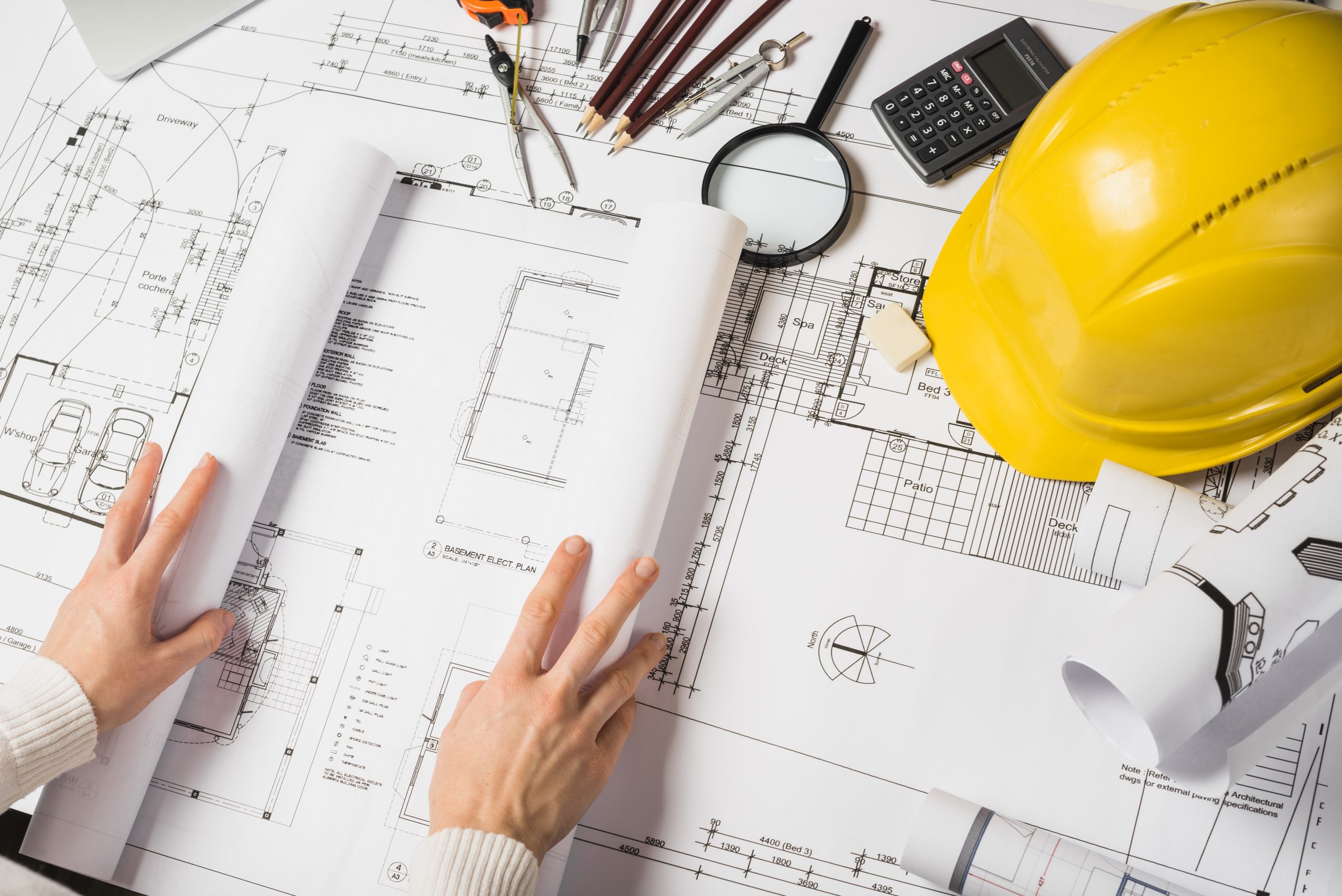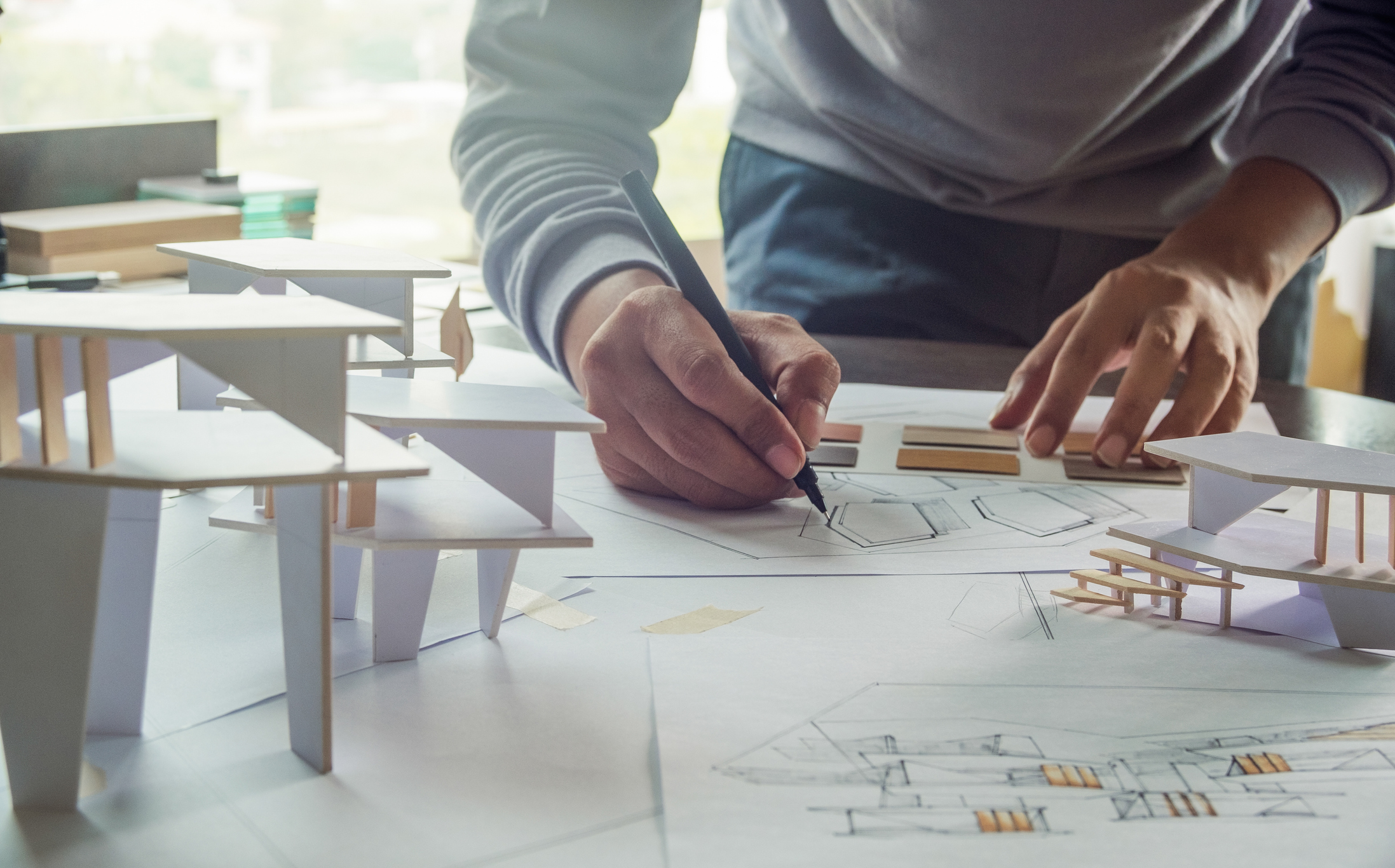Architect Hiring Guide for Homeowners and Developers
Architect Hiring Guide for Homeowners and Developers
Blog Article
Understanding the Diverse Job Paths Available for Aspiring Architect
As an aspiring Architect, you have a globe of occupation courses awaiting you. Each course supplies unique challenges and opportunities to use your creative thinking and technical expertise. Whether you're drawn to conventional design or the subtleties of lasting layout, there's a specific niche that lines up with your interests. Comprehending these varied options can shape your expert trip, but which direction will you choose to check out first?
Typical Architecture: Designing Frameworks and structures
Conventional style concentrates on designing buildings and structures that blend capability with visual allure. Your designs can show social heritage, showcasing neighborhood traditions while satisfying contemporary needs.
You'll develop skills in preparing, model-making, and website evaluation, permitting you to envision and communicate your concepts properly. Engaging with clients, you'll need to comprehend their vision and convert it right into practical styles.
Additionally, constructing codes and sustainability practices are important in your work, guaranteeing your frameworks are secure and environmentally friendly. As you expand in your career, you'll discover chances in domestic, industrial, or perhaps restoration tasks, each offering distinct obstacles. Embracing conventional architecture leads the method for a satisfying profession that pays tribute to the past while shaping the future.
Urban Planning: Shaping Neighborhoods and Public Spaces
As an ambitious Architect, you can play a necessary duty as a metropolitan coordinator, changing just how neighborhoods function and communicate. By utilizing community involvement approaches, you'll assure that residents have a voice in forming their atmosphere. Plus, incorporating sustainable layout concepts will help create spaces that not only meet today's needs however likewise protect the future.
Role of Urban Planners
While numerous may assume of architects as the sole visionaries behind structures, city organizers play a vital function in shaping the wider landscape of areas and public spaces. By collaborating with various stakeholders, you'll aid make parks, transportation systems, and property areas that promote social interaction and availability. Your proficiency in spatial style and community characteristics enables you to visualize future development while maintaining cultural heritage.
Community Involvement Techniques
Reliable neighborhood engagement approaches are crucial for urban coordinators to ensure that the voices of residents are listened to and valued in the planning procedure. To promote significant dialogue, you must prioritize open discussion forums and workshops where community participants can reveal their concepts and issues. Usage studies and social media sites to reach a more comprehensive audience, making certain varied point of views are included. Working together with neighborhood organizations can improve trust and promote deeper links. It is very important to give clear details regarding decision-making processes and proposed tasks, allowing citizens to feel enlightened and encouraged. By actively listening and integrating feedback, you'll create areas that show the area's requirements, inevitably resulting in more lasting and successful metropolitan environments. Accept openness and continuous dialogue for long-term impact.
Sustainable Design Concepts
When making urban spaces, including sustainable layout concepts is vital for developing atmospheres that flourish both environmentally and socially. Think about incorporating green rooms, like parks and gardens, to improve biodiversity and improve air quality.
Creating with water conservation in mind is likewise key-- assume regarding rain yards and absorptive surfaces to take care of stormwater. Entailing community participants during the preparation procedure assurances that the rooms you produce satisfy their requirements and encourage social interaction. By accepting these concepts, you'll contribute to vivid, sustainable metropolitan landscapes that profit everybody.

Landscape Architecture: Developing Sustainable Outdoor Settings
As you check out landscape architecture, you'll find necessary layout principles that produce practical and stunning exterior areas. Lasting techniques play a crucial role in making sure these settings thrive while lessening environmental impact. And also, you'll find a range of job possibilities that allow you to make a genuine difference in exactly how people connect with nature.
Style Concepts in Landscape
Comprehending style principles in landscape design is necessary for producing sustainable exterior settings that integrate with nature. You'll require to consider elements like percentage, range, and balance to guarantee your designs really feel natural and inviting. Additionally, pay attention to seasonal modifications, making with materials that complement the environments year-round.
Lasting Practices Introduction
Sustainable techniques in landscape architecture not only concentrate on appearances but additionally prioritize environmental wellness and source preservation. You can develop rooms that promote soil health and wellness, such as exercising and making use of natural materials permaculture concepts. Ultimately, these techniques assure your layouts profit both individuals and the environment for years to come.
Job Opportunities Expedition
With a strong foundation in lasting practices, landscape architecture provides a range of occupation paths that enable you to make a significant effect on the environment. You can work as a landscape developer, creating aesthetically pleasing and functional outdoor spaces, or concentrate on eco-friendly restoration, helping to restore damaged environments. Urban coordinators often team up with landscape engineers to develop eco-friendly areas in urban settings, boosting city livability. If you're passionate about education, consider coming to be a landscape style teacher, inspiring future generations. In addition, you could deal with nonprofits concentrated on ecological sustainability or involve in research study to introduce new practices. Each course not only shapes beautiful settings however also cultivates a much healthier planet for future generations.
Sustainable Style: Concentrating On Eco-Friendly Practices
As you explore your profession in architecture, accepting environment-friendly practices can set you wikipedia reference apart in a competitive area. Sustainable style concentrates on creating structures that reduce ecological influence while improving owner well-being. By integrating sustainable products, energy-efficient systems, and sustainable building methods, you'll add to a greener future.
Start by getting knowledge of eco-friendly accreditations like LEED or BREEAM, which can bolster your credentials. Take into consideration just how all-natural light, air flow, and thermal efficiency can maximize design. Work together with designers and ecological consultants to innovate remedies that reduce waste and save resources.
Don't fail to remember the relevance of community involvement-- appealing regional stakeholders can influence styles that harmonize with the atmosphere. As clients progressively prioritize sustainability, your knowledge in green practices will not only draw in projects but also satisfy your interest for accountable design. Accept this crucial facet of the career, and enjoy your profession prosper.
Historic Preservation: Safeguarding and Restoring Cultural Heritage
While you commence on your building journey, think about the vital function of historic preservation in preserving our cultural heritage. This area concentrates on the security and remediation of considerable structures, sites, and structures that inform the tales of our past. By engaging in historical conservation, you'll assist safeguard the building tradition that shapes neighborhood identification.
As a historic conservation Architect, you'll examine historical value and examine the condition of frameworks. You'll work very closely with historians and conservationists to guarantee authentic restoration techniques are utilized. This career path permits you to mix creative thinking with research study, allowing you to develop remedies that respect original products and craftsmanship.
Your job not just adds to sustainability by recycling existing structures yet likewise cultivates a sense of pride within areas. Embracing this course will assist you come to be a guardian of history, protecting the tales and visual appeals that improve our lives.
Interior Design: Enhancing Indoor Spaces
Historical conservation and indoor style both share a commitment to improving the developed setting, but they concentrate on various aspects. While historic conservation stresses keeping a structure's historical and cultural value, interior design absolutely nos in on optimizing interior areas for capability and aesthetics.
As a hopeful Architect, you'll discover that indoor style permits you to mix creative thinking with technological abilities. You'll design spaces that not only look good but also promote comfort and efficiency. This field involves understanding how light, shade, and materials communicate within a room, impacting mood and functionality.
You'll deal with various projects, from domestic homes to industrial workplaces, making certain anchor that each setting fulfills the requirements of its passengers. By focusing on customer experience, you can change interiors into useful and motivating rooms, making a substantial effect on exactly how people interact with their surroundings. Embrace the possibility to improve indoor environments and form the method individuals live and work.
Industrial Layout: Combining Functionality With Aesthetics
Industrial layout plays an essential duty in producing items that flawlessly mix looks with performance, ensuring that what you make use of daily is not just aesthetically appealing yet likewise practical. As an ambitious Architect, you can engage yourself in this area, concentrating on making whatever from furnishings to consumer electronic devices. Your work involves comprehending user requirements, products, and making processes, enabling you to create ingenious solutions that improve everyday experiences.
In commercial design, you'll usually work together with designers, marketing professionals, and producers, ensuring that your designs are not only attractive but likewise feasible. You'll find out to stabilize form and function, prioritizing functionality without compromising design. By sharpening your abilities in sketching, 3D modeling, and prototyping, you'll be well-equipped to bring your ideas to life. This occupation course uses a vibrant setting where creativity meets functionality, making it a fulfilling selection for engineers curious about forming the items of tomorrow.
Often Asked Questions
What Educational Qualifications Do I Required to Become an Engineer?
To end up being a designer, you'll need a professional level in design, commonly a Bachelor's or Master's. Furthermore, you'll have to complete an internship and pass the Architect Enrollment Assessment to exercise lawfully.
Exist Accreditation Requirements for Various Architectural Job Paths?
Yes, there're accreditation requirements for numerous architectural courses. Architect. You'll need to pass tests, her comment is here complete teaching fellowships, and in some cases seek specialized training, relying on your selected emphasis, like landscape architecture, urban layout, or historic conservation
What Software Application Abilities Are Important for Engineers Today?

Just How Can I Gain Practical Experience While Examining Style?
You can get useful experience by interning at building firms, getting involved in design competitors, volunteering for area projects, or teaming up with classmates on real-world tasks. These opportunities improve your abilities and build useful connections in the market.
What Work Opportunities Exist Outside Typical Architecture Firms?
You can discover various task possibilities outside traditional design companies, like urban preparation, indoor design, landscape style, construction management, realty advancement, or perhaps roles in sustainability consulting. Each deals unique obstacles and incentives.
Whether you're attracted to typical style or the nuances of sustainable style, there's a specific niche that aligns with your interests.When developing metropolitan rooms, incorporating sustainable design principles is crucial for producing atmospheres that grow both environmentally and socially.As you discover landscape architecture, you'll discover crucial design principles that produce stunning and functional outside areas.Recognizing design principles in landscape design is vital for producing lasting outside atmospheres that integrate with nature.In commercial layout, you'll usually work together with marketing professionals, designers, and manufacturers, making sure that your styles are not only stunning however also feasible.
Report this page